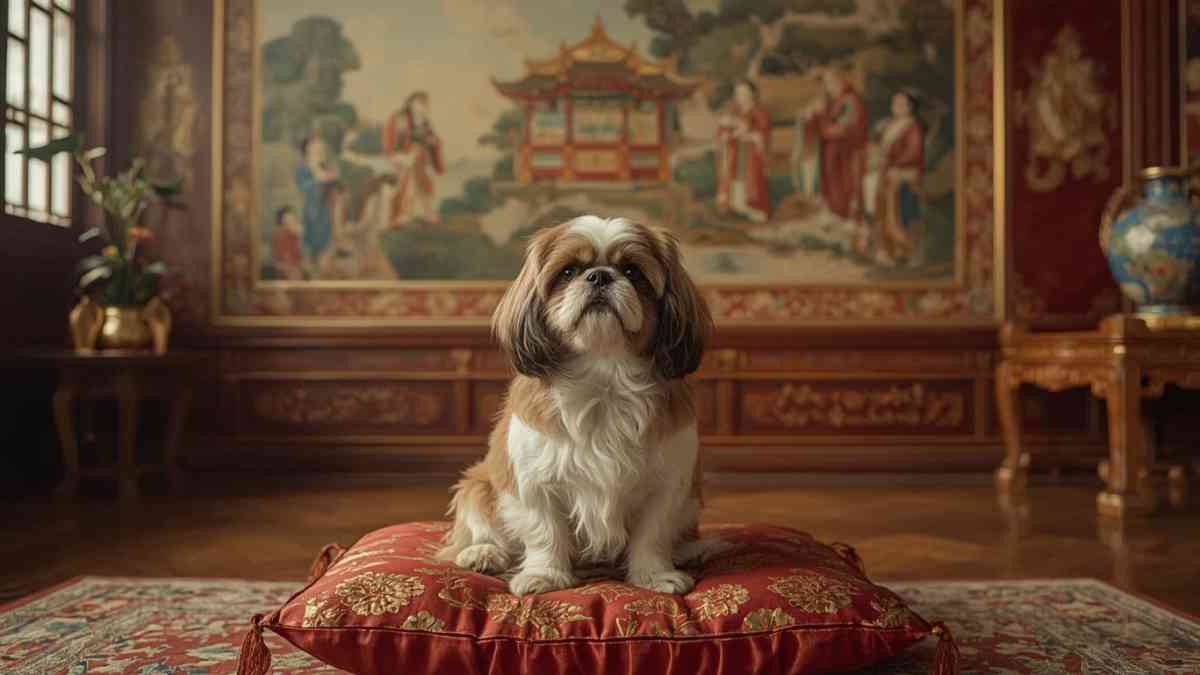Breed History of the Shih Tzu: From Ancient Palaces to Modern Homes

Among the many companion dog breeds that have captured hearts across the globe, the Shih Tzu stands out not only for its adorable appearance but for its remarkable lineage. Its breed history is steeped in imperial prestige, cultural significance, and centuries of careful breeding. In this article, we will explore the origins, royal associations, and evolution of the Shih Tzu, offering a comprehensive overview of the breed history and what makes this toy dog breed so cherished worldwide.
Ancient Origins in the Tibetan Highlands
The breed history of the Shih Tzu begins in the ancient temples of Tibet, where small lion-like dogs were bred by monks. These early ancestors of the Shih Tzu were revered in Tibetan Buddhism and often regarded as sacred beings that symbolized lions—animals considered protectors in Buddhist lore. It is believed that these dogs were gifted to Chinese emperors as signs of goodwill and spiritual alliance.
The Tibetan breeds, such as the Lhasa Apso, were likely crossbred with Chinese royal breeds like the Pekingese, resulting in the distinctive Shih Tzu—a dog with a unique look, temperament, and spiritual symbolism. This blend of Tibetan and Chinese breeds laid the foundation for the modern Shih Tzu we know today.
Royal Connections and Chinese Imperial Breeding
Once introduced to the Chinese imperial court, the Shih Tzu became a favored breed among royalty. During the Ming and Qing dynasties, especially under the reign of Empress Dowager Cixi in the 19th century, the Shih Tzu was bred exclusively within the confines of the Forbidden City in Beijing. Palace eunuchs were tasked with the sacred duty of maintaining bloodlines, carefully pairing dogs to preserve their size, coat quality, and regal demeanor.
Unlike many other breeds used for hunting or working, the Shih Tzu’s sole purpose was companionship. These dogs were pampered and treasured by the Chinese elite, often seen sitting on silk cushions and adorned with ornate accessories. Portraits, sculptures, and tapestries from this era often depict dogs that strongly resemble the Shih Tzu, solidifying its status as a noble companion.
Decline and Near Extinction After the Imperial Era
With the fall of the Qing dynasty in the early 20th century, the breed history of the Shih Tzu took a dark turn. As imperial breeding programs were abandoned and the Forbidden City opened to outsiders, many of the dogs were lost, killed, or left to stray. Only a small number survived this political upheaval.
Fortunately, a few of these surviving dogs were smuggled out of China by foreign diplomats and military personnel. Among the earliest and most influential exports were dogs brought to the United Kingdom. These dogs became the foundational stock for reestablishing the breed outside China.
The Shih Tzu in the United Kingdom
The reestablishment of the Shih Tzu breed owes much to British breeders who recognized the uniqueness of these small dogs. Lady Brownrigg, a key figure in the breed’s revival, imported several dogs to England in the late 1920s and early 1930s. These dogs, including a famous pair named Hibou and Shu-ssa, formed the nucleus of the Western Shih Tzu lineage.
British breeders began formalizing the breed standard in the 1930s. By 1940, the Kennel Club in the UK officially recognized the Shih Tzu as a distinct breed, separate from the Lhasa Apso. Dog shows, including the prestigious Crufts, featured the Shih Tzu, and the breed’s popularity surged among the upper and middle classes.
International Recognition and Expansion
As the breed gained traction in the UK, it began spreading across Europe and into North America. In the United States, the Shih Tzu was first registered by the American Kennel Club (AKC) in 1969. Enthusiasts from around the world collaborated to establish uniform standards and responsible breeding practices.
All modern Shih Tzus are believed to descend from just 14 dogs—seven males and seven females—imported between the 1920s and 1950s. This limited genetic pool required breeders to work diligently to avoid health issues while maintaining the breed’s distinctive traits.
Breed Characteristics and Traits
Understanding the breed history of the Shih Tzu gives us insight into why the breed looks and behaves the way it does. Bred as a companion dog, the Shih Tzu has an affectionate, loyal, and friendly temperament. It thrives in family settings and adapts well to apartment living.
Physically, the Shih Tzu is a small dog with a sturdy body, a luxurious double coat, and a distinctive “chrysanthemum” face—named for the way its hair grows outward from the center of the face. Their flowing coat, while beautiful, requires regular grooming to prevent matting.
Health and Lifespan Considerations
Thanks to careful breeding and an emphasis on companionship rather than utility, Shih Tzus tend to enjoy long lifespans, often reaching 12 to 16 years. However, as a brachycephalic breed (short-nosed), they are susceptible to certain respiratory issues and overheating. Other common health concerns include eye problems, hip dysplasia, and dental issues.
Responsible breeders work hard to reduce the incidence of these problems through health screening and selection. Regular vet visits, a nutritious diet, and good grooming habits go a long way in keeping a Shih Tzu healthy.
Cultural Significance and Modern Popularity
From its divine symbolism in Tibet to its imperial role in China, the Shih Tzu has long been associated with spiritual and cultural richness. Today, it maintains its reputation as a loving and graceful companion. Its small size and endearing personality have made it especially popular among city dwellers, seniors, and families alike.
In the UK, the breed continues to enjoy popularity as both a show dog and a family pet. Numerous clubs and societies support breed health, education, and ethical breeding practices. Dog shows continue to celebrate the breed’s elegance and historic lineage.
Why the Shih Tzu Breed History Still Matters
Understanding the breed history of the Shih Tzu is more than an academic exercise—it informs how we care for, breed, and relate to these beloved dogs today. Knowing that the breed was developed for companionship rather than labor explains its affectionate nature. Recognizing its limited gene pool emphasizes the importance of responsible breeding.
By appreciating the Shih Tzu’s history, owners can better respect the unique needs and personality traits of their pets. It’s also a way of honoring the long journey these dogs have taken—from Tibetan temples and Chinese palaces to modern British homes.
Conclusion
The breed history of the Shih Tzu is a testament to its enduring charm, cultural significance, and adaptability. From sacred altars and royal courts to everyday households, the Shih Tzu’s legacy is one of loyalty, elegance, and devotion. It remains a symbol of companionship that transcends time and borders.
For anyone researching “shih tzu about the breed,” knowing its rich historical background helps illuminate why this small dog carries such a big legacy. As both a historical treasure and a modern favorite, the Shih Tzu continues to prove why it’s one of the most beloved toy breeds in the world.
Discover the royal journey of the Shih Tzu and embrace its legacy.




